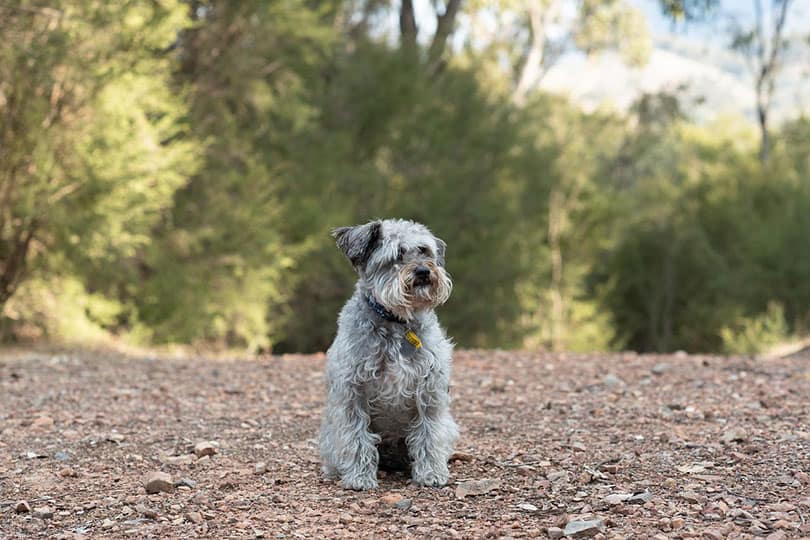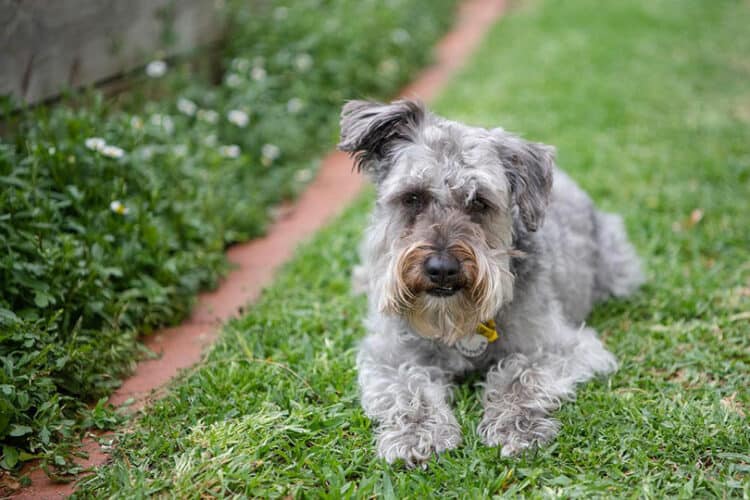Schnoodle dogs are a popular crossbreed between a Schnauzer and a Poodle. The result is an adorable and low-shedding dog. While Schnoodles are considered hypoallergenic, this doesn’t guarantee that they won’t cause an allergic reaction.
Let’s take a closer look at why Schnoodles are considered hypoallergenic and what that really means for those who suffer from dog allergies.
What Does Hypoallergenic Mean?
Hypoallergenic is a frequently used term, but it doesn’t mean what many people think. The cosmetic industry first used the term to describe products that were less likely to trigger an allergic reaction. However, less likely is not the equivalent of never.
If you’re allergic to dogs, it is most likely that your allergies are triggered by dander. Dander is essentially dry, dead skin that flakes off. The amount that a dog sheds directly correlates with the amount of dander that they release into the air. Therefore, low-shedding or non-shedding dogs are labeled as hypoallergenic. They release less dander into their environment, so they are less likely to trigger an allergic reaction in sensitive individuals — but it doesn’t mean it’s impossible.
Hypoallergenic Dog Breeds
Some dog breeds are considered hypoallergenic because their coats don’t produce extensive amounts of dander. However, caution should be used when purchasing a hypoallergenic dog, particularly if they are a mixed breed. Even though parent dogs are hypoallergenic, there is no guarantee that puppies will be, as they must inherit certain traits from their parents.
While many dog breeds are low shedding and produce low amounts of dander, no dog is truly 100% hypoallergenic. That said, there are many breeds that allergy sufferers can do well with, as they have a predictable dander load and low-shedding coat.
Since the Schnoodle is a crossbreed dog, be wary of claims that they are hypoallergenic. There is no guarantee that a puppy will retain the hypoallergenic properties of their parents, despite what breeders may claim. However, since both Poodles and Schnauzers are considered hypoallergenic dogs, there is an increased likelihood that Schnoodle offspring will retain this quality.

What Causes Dog Allergies?
It is estimated that as many as 10% of Americans are allergic to dogs. For certain dog lovers, the development of this allergy is distressing. The development of designer dog breeds with hypoallergenic properties has therefore developed as more breeders seek to produce dogs that don’t shed.
Unfortunately, low-shedding dogs aren’t all hypoallergenic. Dog hair isn’t the trigger of allergy symptoms. While it can exacerbate symptoms, it’s pet dander that is the issue. Dog breeds like the Poodle catch and trap dander in their coats, which means it doesn’t get released into the environment.
Even if you find a dog that secretes low dander levels, they can still trigger your allergy symptoms. Dander is the most common trigger, but skin, saliva, and urine can also trigger allergies.
Do Schnoodles Shed?
Schnoodles are low-shedding dogs. Neither of their parent breeds shed much. If your pup inherits their coat from their Poodle parent, they usually also inherit the quality of trapping dander in the coat, lowering the risk of a reaction.
Final Thoughts
The Schnoodle is a crossbreed dog with hypoallergenic qualities. If you suffer from dog allergies, this breed is less likely to trigger allergy symptoms than many others, but there is no guarantee that you won’t have a reaction. If you are worried about your allergies, it is best to speak with your doctor before bringing a dog home. While hypoallergenic dogs are the answer for many people, they aren’t the solution for everyone.
Featured Image Credit: Pixabay














